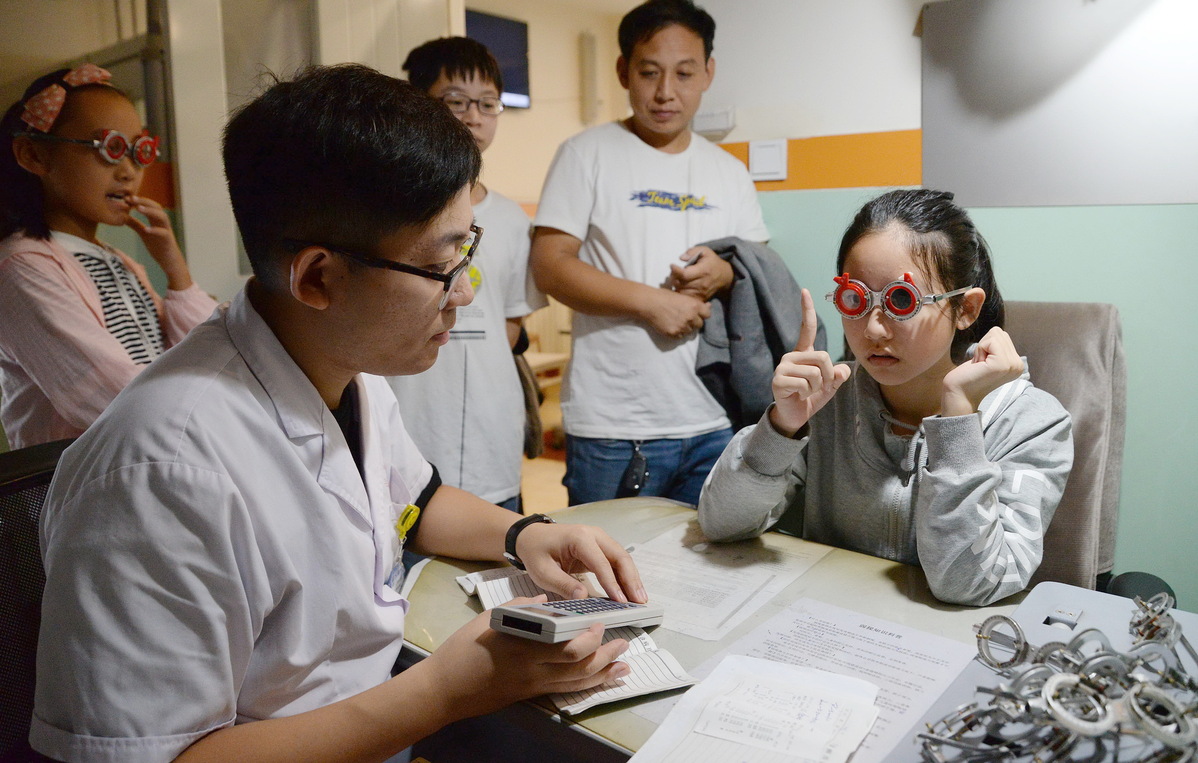
A primary school student gets a vision test in Handan, Hebei province, during the summer holiday in 2020. [Photo by Hao Qunying/For China Daily]
A new work plan has been laid out to curb myopia among children, as experts highlighted the need for schools and families to guarantee that students get more exposure to nature to avoid nearsightedness.
The plan marked the third straight year the Ministry of Education has rolled out measures to combat myopia, and includes measures banning students from bringing cellphones and other electronic devices into classrooms and reducing the amount of time students can use devices during the school day.
Local education authorities will receive guidance on ensuring that students get adequate sleep, and should limit the time students need to finish homework according to their grade level.
Schools, dormitories and libraries must use lighting that does not have a detrimental effect on eyesight, the plan said.
Children must be guaranteed at least two hours of outdoor activities on a daily basis, and they must be fed diets beneficial to their eyesight, it added.
Chinese authorities have scaled up efforts to curb the incidence of myopia among children after the national leadership stressed stronger efforts to protect vision.
Myopia rates among Chinese youth are the highest in the world, according to the World Health Organization. A survey by the National Health Commission conducted in 2020 found that 14.3 percent of children age 6 or below, 35 percent of primary school students, 71.1 percent of junior high school students and 80.5 percent of senior high school students suffered from myopia.
According to a plan to curb the condition issued by the Ministry of Education in 2021, the percentage of primary school students with myopia should be under 38 percent by 2030, and under 60 and 70 percent for middle school and high school students, respectively.
Chu Zhaohui, a senior researcher at the National Institute of Education Sciences, said the heightened use of electronic devices among children has been a key factor in the rising incidence of childhood myopia.
One fundamental reason for this is the pressure on children to excel in their academic performance, which forces them to spend too much time reading indoors, he said.
He highlighted the need to reform the evaluation system for students and teachers, and to give schoolchildren more time outdoors, which is key to reducing myopia rates.
"The best solution is to enable children to have greater autonomy over their time, and offer greater exposure to nature with less access to electronic devices," he said.
Li Shiming, an ophthalmologist and associate professor at Beijing Tongren Hospital, said there has been a rise in the number of children age 4 or 5 who are diagnosed with shortsightedness, and that some of his patients have been as young as 2.
The primary reason that children so young are developing myopia is the rise in early education programs, which has resulted in eye strain.
The number of children with severe myopia, or nearsightedness higher than 600 degrees, has also risen to about 10 percent of his cases, Li said, explaining that this can cause a variety of vision problems.
"Parents play a key role in preventing nearsightedness, and one crucial solution is to give children greater exposure to outdoor activities on the weekends and after school and less indoor training, be that piano or drawing lessons, at too early an age," he said.
Editor:Mi Wenting






